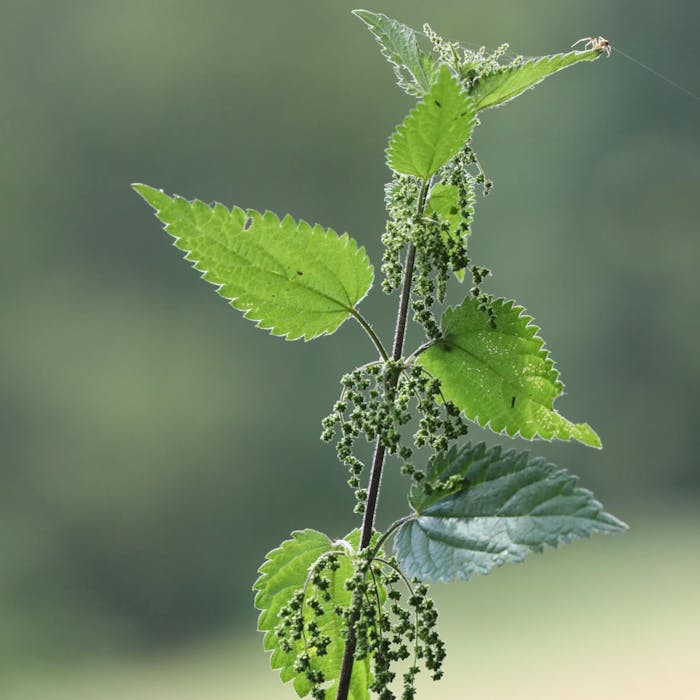
The stinging nettle - a pain and a remedy
The stinging nettle is a very familiar plant in Britain. Once touched - usually by an inquisitive child - it is never forgotten, due to its hollow stinging hairs (trichomes) that pierce the skin like needles, and the irritating rash that follows contact with them. But despite its venom, the nettle does have many uses, both for wildlife and mankind.
The nettle, Urtica dioica, is native to Europe, parts of Asia and north Africa but has subsequently spread worldwide. It is a herbaceous perennial flowering plant that grows well in loose, newly cultivated and fertile soil, which is why it is so familiar to the gardener and allotment-holder, and as an early occupant of waste ground.
Nettles are a boon to wildlife: caterpillars of the small tortoiseshell, red admiral and peacock butterfly love them as foodplants; ladybirds eat the aphids that often shelter amongst them; and seed-eating birds enjoy them in autumn.
Individual plants or clumps are either male or female, and when both sexes are growing close together, female plants produce large numbers of seeds.
Stinging nettles have been a staple in herbal medicine since ancient times. They have been used to treat arthritis and lower back pain, while Roman troops apparently rubbed themselves with nettles to help them stay warm in chilly Britain.
The nettle is edible and nutritious. Young shoots and leaves were traditionally picked as a spring tonic. Nettle ‘pudding’ or ‘porridge’ was eaten in parts of Britain as a ‘pick-me-up' after winter. Modern research has revealed that the nettle contains vitamin C and iron which explain its use as a spring vegetable. Cooking the plant, even briefly, destroys the stinging hairs and makes the nettle safe to eat. Nettle is also a popular herbal tea.
Before the introduction of flax, nettle cloth was quite common, and was used until at least the 18th century in some parts of Britain. The Scottish poet Thomas Campbell, for example, wrote about sleeping in nettle sheets and eating off a nettle table-cloth. Nettles can be used to make a green dye. During the Second World War, children were encouraged to collect them so that they could be used to produce a dye for camouflage.
Further reading
Links to external websites are not maintained by Bite Sized Britain. They are provided to give users access to additional information. Bite Sized Britain is not responsible for the content of these external websites.
